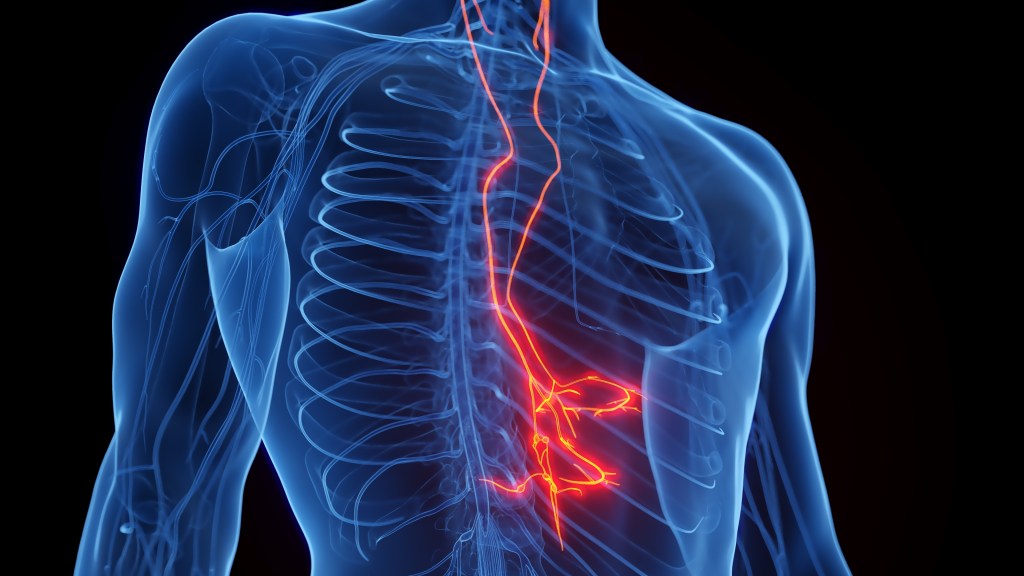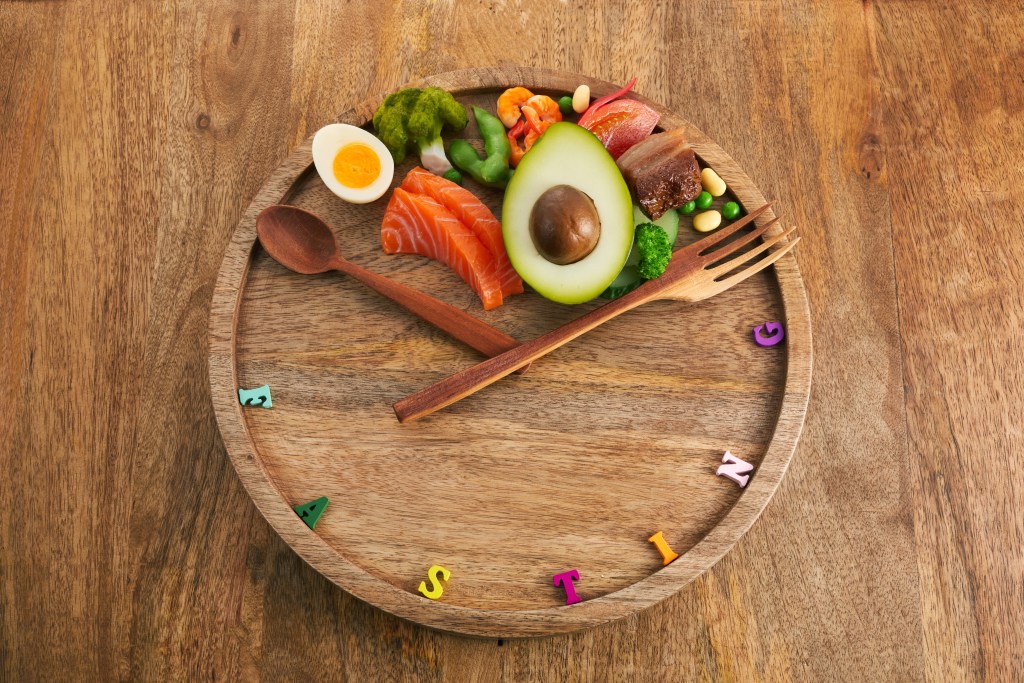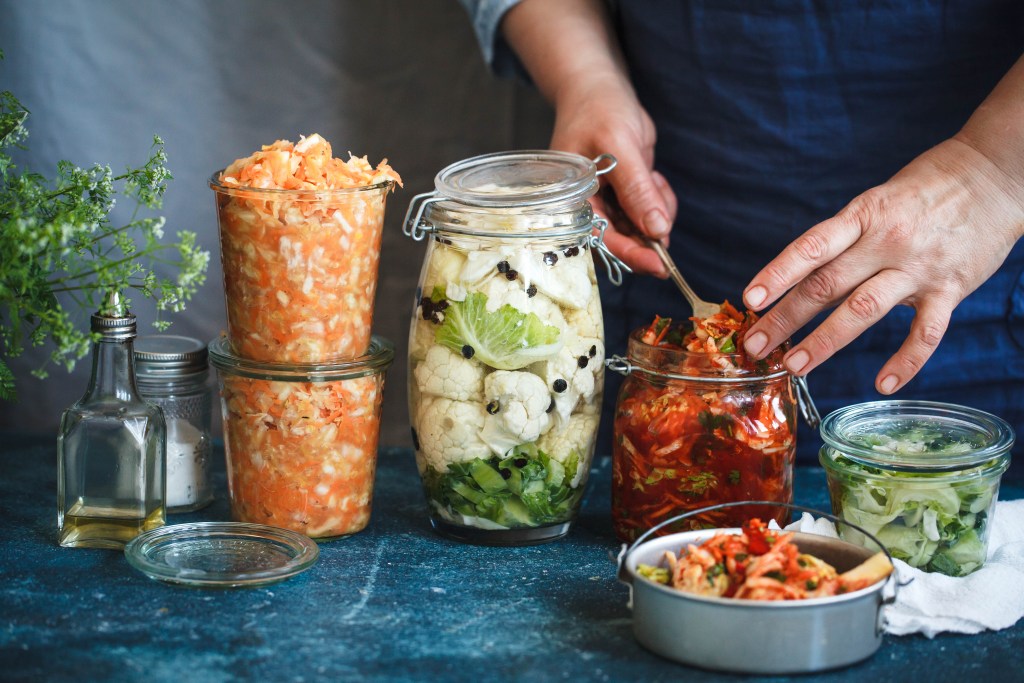Diabetic stomach symptoms, such as abdominal pain, acid reflux, and bloating, are common complications of diabetes, often related to nerve damage caused by chronically elevated blood glucose levels.
Find out what triggers diabetic digestive problems and learn how to manage gastrointestinal discomfort effectively with beneficial dietary and lifestyle changes.
Can diabetes affect the gut?
Diabetes mellitus, widely known as type 2 diabetes, profoundly affects gut health and may contribute to a wide range of intestinal issues.
Diabetes causes chronically elevated blood sugar levels that can damage the vagus nerve, which is key to regulating the function and motility of the gastrointestinal tract.
This damage, known as diabetic autonomic neuropathy, disrupts the normal coordination of stomach muscles. As a result, the stomach empties far more slowly than it should, which is a condition called delayed gastric emptying, or gastroparesis.
This dysfunction leads to various uncomfortable symptoms, such as persistent nausea, bloating, and vomiting, as well as erratic blood sugar levels, as food absorption becomes unpredictable.
Diabetes-related gut issues can affect the entire gastrointestinal tract, including the stomach, small intestines, and large bowel, causing various digestive problems.
These issues can significantly impact quality of life and complicate blood sugar management, as impaired digestion interferes with nutrient absorption and blood glucose regulation.
Data published by the American Diabetes Association (ADA) reveals that gastroparesis is a relatively common complication of diabetes, particularly among individuals who have been living with the condition for over a decade.1
Watch the video below to learn how to manage diabetes-related digestive symptoms.
Diabetic stomach symptoms
Because diabetic neuropathy can impair gut muscle function and disrupt nerve signal transmission throughout the gastrointestinal tract, it can trigger a wide range of digestive issues beyond just diabetic stomach symptoms.
Here are common gastroparesis symptoms:
- Nausea and vomiting
- Abdominal pain
- Bloating
- Early satiety
- Heartburn or acid reflux
- Constipation
- Diarrhea
- Fecal incontinence
- Erratic blood sugar fluctuations
- Loss of appetite
In some cases, gastroparesis can trigger persistent diabetic diarrhea, which can cause severe dehydration, electrolyte imbalances, and nutritional deficiencies that can worsen overall health and complicate diabetes management.
If you have been diagnosed with diabetes and have developed gastrointestinal complications, it’s crucial to consult a healthcare provider for a thorough evaluation of your health status.
A doctor can conduct diagnostic tests such as a gastric emptying breath test, which measures the time it takes for food to move through the stomach.
Depending on the results, your healthcare provider may recommend medications that accelerate gastric emptying, dietary modifications, or gastric electrical stimulation therapy.

Common causes of stomach issues with diabetes
While the majority of diabetic stomach issues are related to vagus nerve damage affecting the digestive tract, other factors can also contribute.
These include poor blood sugar control, the side effects of certain medications, or coexisting conditions such as small intestinal bacterial overgrowth (SIBO) or poor liver function.
Here are common causes of diabetes-related stomach issues.
Microbial overgrowth
A study published in Gastroenterology & Hepatology suggests that people with diabetes are at increased risk of SIBO, characterized by the overgrowth of potentially harmful bacteria in the small intestines.2
This overgrowth can impair normal digestive processes and may contribute to reduced stomach acidity, which can lead to malabsorption and trigger various gastrointestinal symptoms, such as bloating, belching, and abdominal pain.
Impaired liver function
Many diabetics are affected by nonalcoholic fatty liver disease (NAFLD), a potentially serious condition caused by excessive fat accumulation in liver cells.
The liver plays a crucial role in digestive processes and waste elimination as it produces bile acids, which are essential for the breakdown and absorption of fats and fat-soluble vitamins.
Bile acid deficiency can have detrimental effects on gastrointestinal health, contributing to microbial overgrowth and impaired fat digestion, which can lead to abdominal discomfort and chronic diarrhea.
Blood sugar fluctuations
Poorly controlled diabetes can lead to blood sugar fluctuations and elevated glucose levels, which can worsen vagus nerve damage and associated gastrointestinal issues.
This nerve damage disrupts stomach motility, causing delayed gastric emptying and symptoms such as nausea, bloating, and early satiety.
As food moves more slowly through the stomach, nutrient absorption becomes unpredictable, leading to erratic blood sugar levels. This creates a vicious cycle of poor blood sugar control and worsening gastrointestinal symptoms.

Tips for managing digestive issues with diabetes
Diabetic stomach symptoms can be managed by making beneficial dietary and lifestyle changes that support steady blood sugar levels, promote stomach motility, and help enhance digestive processes.
Here are four things you can do to help support diabetic digestive comfort.
1. Follow Healthy Keto®
According to recommendations by the National Institute of Diabetes and Digestive and Kidney Diseases (NIDDK), diabetics with gastroparesis should maintain optimal blood sugar control to reduce the progression of nerve damage and manage digestive issues.3
Research published in Nutrition & Metabolism indicates that a low-carb ketogenic diet is the most effective strategy to support normal blood sugar levels and overall metabolic health in individuals with diabetes.4
The authors conclude, “The low-carbohydrate, ketogenic diet had positive effects on body weight, waist measurement, serum triglycerides, and glycemic control in patients with type 2 diabetes.”
The ketogenic diet limits carbohydrates to no more than 50 grams of net carbs daily while obtaining the majority of calories from healthy fats and moderate amounts of high-quality protein.
Drastically limiting carbohydrates helps keep blood sugar levels steady, making keto an excellent dietary approach to support metabolic health and protect against complications that can impact the nervous system.
In addition to restricting carb intake, it’s equally important to follow a nutritious diet to support optimal nutrient intake and enhance digestive health.
That’s why it’s critical to follow Healthy Keto®, an advanced version of the ketogenic diet that incorporates nutrient-rich, high-quality foods, including non-GMO organic vegetables, grass-fed beef, full-fat organic dairy, pasture-raised eggs, and wild-caught fish.
Because the keto diet triggers significant metabolic changes that support better blood sugar control, it’s essential to consult with a healthcare provider before starting, as adjustments to insulin dosages may be necessary when transitioning to a low-carb diet.

2. Practice intermittent fasting
Intermittent fasting is a mealtime schedule alternating between fasting periods and time-restricted eating windows.
Prolonged periods of caloric restriction allow the digestive system to rest, which can help alleviate gastrointestinal issues, especially those related to gastroparesis.
By reducing the frequency of eating, the digestive system has more time to recover and function more efficiently, improving motility and nutrient absorption.
In addition, practicing intermittent fasting in combination with Healthy Keto is an excellent strategy to shift the body into fat-burning, which promotes weight loss and helps reduce liver fat.
Supporting healthy liver function can significantly enhance bile acid production and fat digestion, which is crucial for alleviating diabetic stomach symptoms.
“If you are new to intermittent fasting, it’s important to gradually extend fasting windows and carefully monitor your blood sugar levels to minimize the risk of dangerously low blood sugar levels,” explains Dr. Berg.
In addition, extended fasting periods may slow gastric emptying in some individuals, potentially worsening diabetic stomach symptoms. Therefore, it’s vital to discuss intermittent fasting with a healthcare provider to ensure it’s safe and tailored to your specific needs.

3. Consume fermented foods
Consuming fermented foods and beverages such as kimchi, sauerkraut, miso, kefir, and kombucha has been found to support digestive health in individuals with diabetes-related gastroparesis.
Fermented foods are rich sources of probiotics, which are live beneficial bacteria that can help support intestinal health by improving digestion and promoting a balanced gut microbiome.
Consuming probiotic-rich foods can help regulate and stimulate bowel movements, which may play a vital role in managing common diabetic stomach symptoms such as constipation, diarrhea, and bloating.
4. Incorporate natural digestive aids
Certain whole foods offer natural gut support to help promote smoother digestion by supporting motility, nutrient absorption, and microbial balance.
Bitter greens–such as arugula, dandelion greens, mustard greens, and endive–support the body’s natural digestive functions, stimulate bile acid release, and promote regular bowel movements.
Apple cider vinegar, especially when raw and unfiltered, contains acetic acid and enzymes that may help support healthy stomach acid levels and promote the digestive process when taken before meals.
Additionally, various compounds in ginger, turmeric, fennel, and garlic have been found to support gut health by soothing the gastrointestinal tract and promoting the efficient absorption of nutrients.

Key takeaways
Diabetes-related gut issues are a common complaint, typically linked to impaired function of the vagus nerve, which regulates gastric emptying, bowel movements, and gastrointestinal motility.
One of the most effective strategies to manage diabetic stomach symptoms is to focus on maintaining steady blood sugar levels, which can be achieved by following a ketogenic diet and practicing intermittent fasting.
In addition, incorporating fermented foods and natural digestive aids, including bitter greens, ginger, turmeric, and garlic, may help support healthy gut function, microbial balance, and gastrointestinal comfort.
FAQ
1. Are stomach issues common if you have diabetes?
Yes, stomach issues are a common complaint in individuals with diabetes, often linked to complications such as neuropathy caused by prolonged elevated blood sugar levels.
Neuropathy can damage the vagus nerve and trigger diabetic gastroparesis, which is characterized by delayed gastric emptying and overall poor digestive functions.
2. What are the top diabetic stomach symptoms?
Some of the most common diabetic stomach symptoms include nausea, bloating, early satiety, vomiting, acid reflux, constipation, diarrhea, and erratic blood sugar levels due to delayed gastric emptying.
3. How does diabetes affect your stomach?
Diabetic gastroparesis, also known as delayed gastric emptying, contributes to slow digestion, where food moves more slowly from the stomach into the small intestine due to vagus nerve damage.
This disruption impairs normal digestive processes and can lead to nausea, bloating, abdominal pain, early satiety, and unpredictable blood sugar levels.
4. What can you do for a diabetic belly?
Following Healthy Keto® in combination with intermittent fasting can help prevent further damage to the vagus nerve by maintaining steady blood sugar levels, making this an excellent strategy for managing diabetic stomach issues.
In addition, incorporating probiotic-rich and digestion-supportive foods–such as sauerkraut, kimchi, miso, kefir, bitter greens, and ginger–may help promote digestive comfort and support a balanced gut microbiome.
5. What are the signs of diabetic gastroparesis?
Common signs of diabetic gastroparesis include nausea, vomiting, bloating, early satiety, and abdominal discomfort. These symptoms are typically linked to delayed gastric emptying, which causes food to move more slowly from the stomach to the small intestine.
Sources
- https://diabetesjournals.org/spectrum/article/33/3/290/32318/Diabetic-Gastroparesis-A-Review ?
- https://pmc.ncbi.nlm.nih.gov/articles/PMC3099351/ ?
- https://www.niddk.nih.gov/health-information/digestive-diseases/gastroparesis/treatment ?
- https://link.springer.com/article/10.1186/1743-7075-2-34 ?








